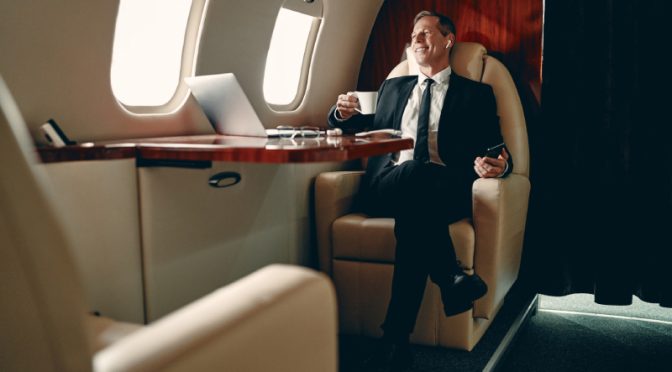
It turns out that once you’ve flown on a private jet, going back to commercial flights feels almost impossible. The pandemic completely changed the private aviation industry—suddenly, a whole new group of travelers, who used to fly business or first class, discovered the luxury and exclusivity of private jets. At first, they might have been drawn in by the safety and convenience, but now, they’re hooked. These new private jet passengers can’t imagine returning to crowded airports and long security lines. And because of this shift, the private jet industry is busier than ever, with more people choosing to fly private than at any point in history.
Michael Silvestro, from the luxury private jet company Flexjet, explains just how big this growth has been: “If you compare the number of people we fly now to five years ago, before the pandemic, we’ve grown by almost 65 percent every year.” Even more impressive? “About 90 percent of the new customers who tried private flying during the pandemic have stuck with it.”
Another big change? The age of private jet travelers is dropping. “Our clients are about 10 years younger now,” Silvestro says. *”Before, most private flyers were in their mid-50s, but now we’re seeing a lot of people in their early to mid-40s.”*
How to Get the Best Deal on a Private or Semi-Private Jet Flight (According to the Experts)
With so many new private jet users—and their friends and family tagging along—there are plenty of first-time flyers in the sky. If you’re one of them, Silvestro has some simple tips to help you fit right in and avoid looking like a rookie.
“There are two golden rules,” he says. “First, never be late.” Unlike commercial flights, where you have to arrive hours early, private jets usually only need you there 30 minutes before takeoff. But that doesn’t mean you should push it. “You should always be waiting for your host, not making them wait for you,” he advises.
Private terminals (called FBOs—short for “fixed-base operators”) are much nicer than regular airport terminals, but you’ll still go through security. “You’ll need your ID, and if you’re flying internationally, you’ll go through customs,” Silvestro explains. “But it’s way faster and more personal—no huge lines or crowded security checks.”
The second big rule? “Don’t sit in the owner’s seat.” On most private jets, the prime spot—the forward-facing club chair on the right side—is reserved for whoever’s hosting the flight. “Most owners like sitting near the cockpit so they can talk to the pilot,” Silvestro says. If you’re not sure where to sit, just ask. “It’s like being a guest at someone’s house—you wouldn’t just plop down at the head of the table. A simple ‘Where should I sit?’ goes a long way.”
When it comes to drinks, Champagne is always a safe choice—it’s easy to serve on a plane. But skip fancy coffee orders. Some jets have Nespresso machines (like Flexjet’s fleet), but anything more complicated is better saved for when you’re back on the ground.
Want to eat gourmet meals in the sky? You can—but think before you order. “Consider where you’re flying from,” Silvestro suggests. “If you’re leaving from a big city like Miami, L.A., or New York, sushi is a great idea. But if you’re in a small town in the Midwest, maybe not.” He also recommends trying local specialties. “If you’re flying out of Italy, why get a basic sandwich when you could have amazing Italian food? Make it part of the experience.”
A few more quick tips to avoid looking like a newbie:
- Don’t overpack. Storage space is limited, and soft bags work best.
- Don’t post the jet’s tail number online. It can be tracked, which is a privacy risk.
- Skip the big tips. “You don’t need to worry about tipping,” Silvestro says. “Just be polite and respectful—that’s what matters.”
And his final piece of advice? “Just don’t be a jerk.” Good rule for private jets—and honestly, for life.

